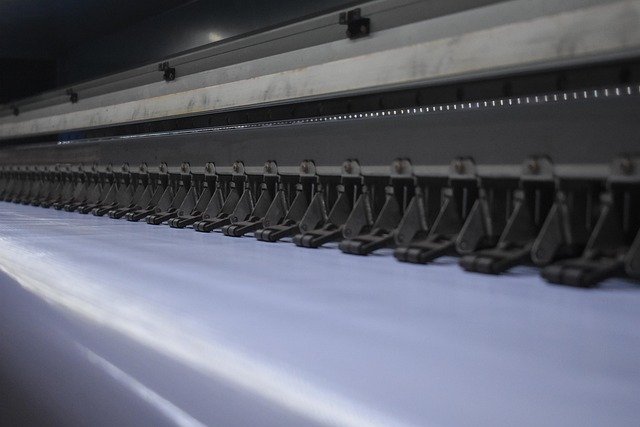Learn More About Paper Printing Machines: Types, Features, and Uses
Learn more about what makes a paper printing machine right for your business. From offset and digital models to high-speed flexographic systems, this guide explores machine types, print quality specs, maintenance requirements, and cost factors. Whether you're upgrading existing equipment or entering the commercial print market, understanding resolution, paper handling, ink compatibility, and production volume can help maximize ROI and operational efficiency.

Understanding Commercial Paper Printing Machines
Commercial paper printing machines are industrial-grade equipment designed for high-volume production environments. Unlike office printers, these systems are built for durability and consistent output quality. Modern commercial printers typically feature advanced color management systems, automated maintenance protocols, and robust media handling capabilities. They range from entry-level production printers to massive web presses that can print thousands of sheets per hour. The market offers various configurations based on speed requirements, paper handling capabilities, and finishing options such as binding, cutting, and folding mechanisms integrated into the printing workflow.
Digital and Offset Printing Systems Compared
Digital and offset are the two primary technologies dominating the commercial printing landscape, each with distinct advantages. Digital printing systems transfer images directly from digital files to paper using toner or inkjet technology. These machines excel in variable data printing, allowing each printed piece to contain unique information without slowing production. They offer quick turnaround times with minimal setup and are economical for short runs. Offset printing, meanwhile, uses plates to transfer ink to rubber blankets and then to paper. This indirect method provides exceptional color consistency and quality, especially on specialty papers and large formats. Offset becomes increasingly cost-effective as run lengths increase, though it requires more setup time than digital alternatives.
Industrial Print Equipment Overview
The industrial printing sector encompasses specialized equipment designed for specific manufacturing and production environments. These machines often feature extended durability ratings, heavy-duty components, and enterprise-level automation systems. Large-format printers can handle sheets measuring several meters wide, while continuous feed systems process roll-fed materials at remarkable speeds. Modern industrial printers incorporate sophisticated quality control mechanisms, including inline spectrophotometers for color verification and camera systems for defect detection. Many industrial systems also feature modular designs, allowing businesses to start with basic configurations and add components as needs evolve. Integration capabilities with manufacturing execution systems (MES) further enhance productivity by connecting printing operations with broader production workflows.
Flexographic vs Offset Printing: Key Differences
Flexographic and offset printing represent two distinct approaches to high-volume production printing, each suited to different applications. Flexographic printing uses flexible relief plates wrapped around cylinders, making it ideal for continuous substrates like packaging materials. This technology excels with non-porous materials including plastics, metallic films, and corrugated cardboard. Flexo presses can reach extremely high speeds, making them cost-effective for long production runs. Offset printing, by contrast, relies on the principle that oil and water don’t mix. It produces exceptional print quality with sharp details and vibrant colors, particularly on paper substrates. Offset generally offers better color consistency and detail reproduction, while flexography provides greater versatility with substrate materials and typically lower per-unit costs for very long runs.
Paper Printing for Packaging and Labels
The packaging and label industry relies heavily on specialized printing systems designed for unique substrate requirements and finishing processes. Modern packaging printers must handle various materials from cardstock to flexible films, often with specialty coatings and finishes. Label printing systems frequently incorporate die-cutting, embossing, and foil stamping capabilities in-line with printing functions. Digital label presses have gained significant market share due to their ability to produce short runs economically while accommodating increasingly customized designs. Variable data printing capabilities allow for serialization, batch coding, and personalization without slowing production speeds. Environmental considerations have also driven innovation in this sector, with new systems designed to use water-based inks and support sustainable substrate materials.
Commercial Printing Equipment Pricing and Features
Commercial printing equipment represents a significant capital investment, with costs varying dramatically based on capabilities, output volume, and automation features. Understanding the market landscape helps businesses plan appropriate technology investments.
| Printing System Type | Typical Price Range | Key Features | Best Applications |
|---|---|---|---|
| Entry-Level Digital Production | $15,000-$100,000 | 60-80 ppm, basic finishing | Small print shops, in-house marketing departments |
| Mid-Range Digital Press | $100,000-$300,000 | 80-120 ppm, advanced color management | Commercial print providers, medium volume needs |
| High-End Digital Press | $300,000-$1,000,000+ | 120-200+ ppm, inline finishing | High-volume digital production, variable data |
| Entry-Level Offset Press | $150,000-$500,000 | 4-color, sheet-fed, slower speeds | Small commercial printers, general printing |
| Industrial Offset Press | $500,000-$2,000,000+ | 4-8 color, high speed, automation | Large commercial printers, publications |
| Flexographic Press | $200,000-$1,500,000+ | Variable width, multiple stations | Packaging, labels, continuous materials |
| Label Printing System | $50,000-$750,000+ | Roll-to-roll, die-cutting integration | Label manufacturers, packaging companies |
Prices, rates, or cost estimates mentioned in this article are based on the latest available information but may change over time. Independent research is advised before making financial decisions.
The printing industry continues to evolve with technological advancements improving efficiency, quality, and versatility across all machine categories. Understanding the strengths and limitations of different printing technologies allows businesses to select equipment that aligns with their production needs, budget constraints, and quality expectations. Whether choosing digital systems for short-run flexibility or traditional offset and flexographic presses for high-volume consistency, the modern printing equipment market offers solutions for virtually every commercial and industrial application.




